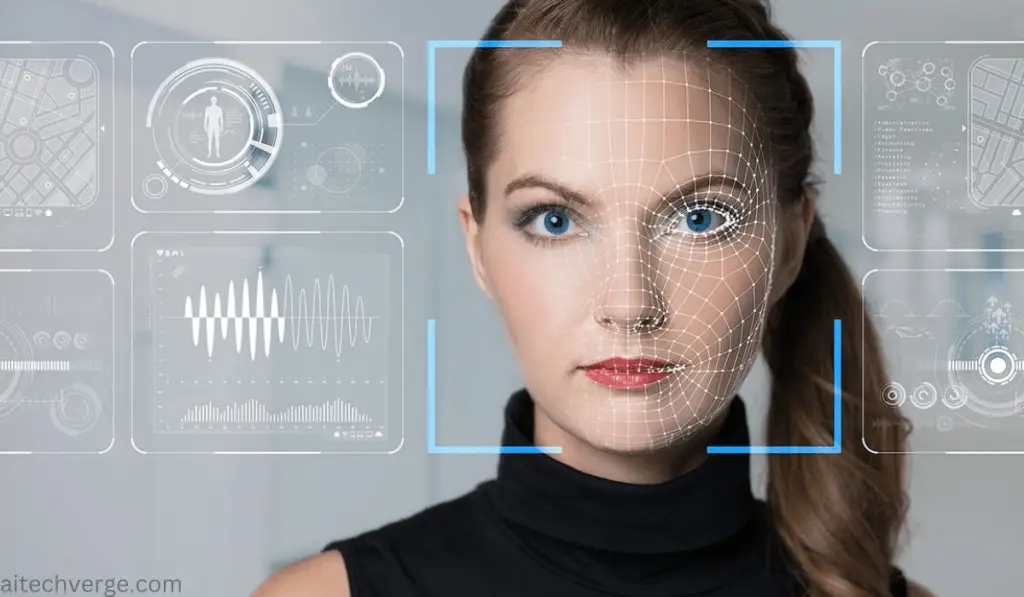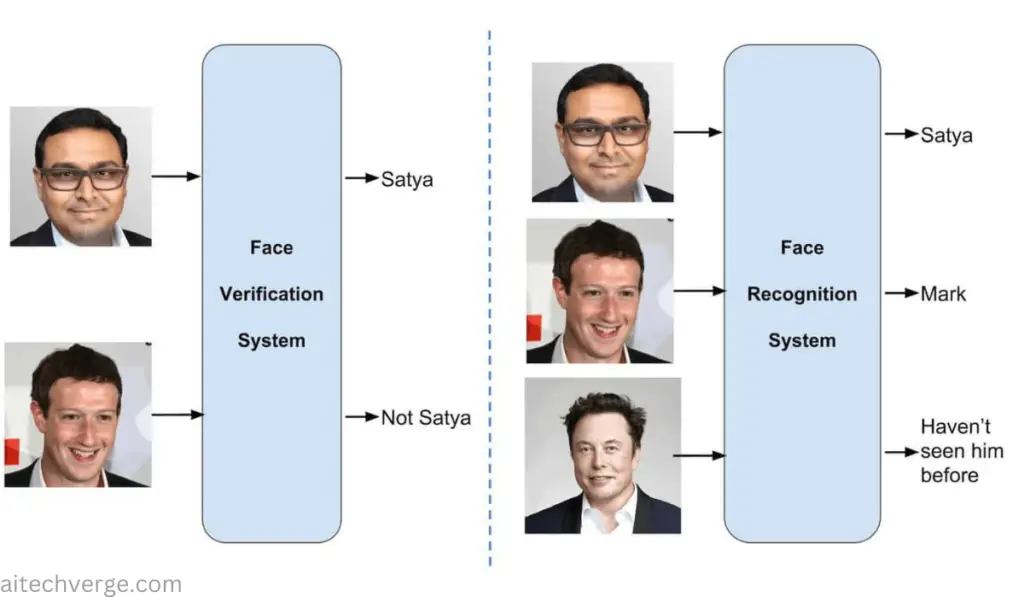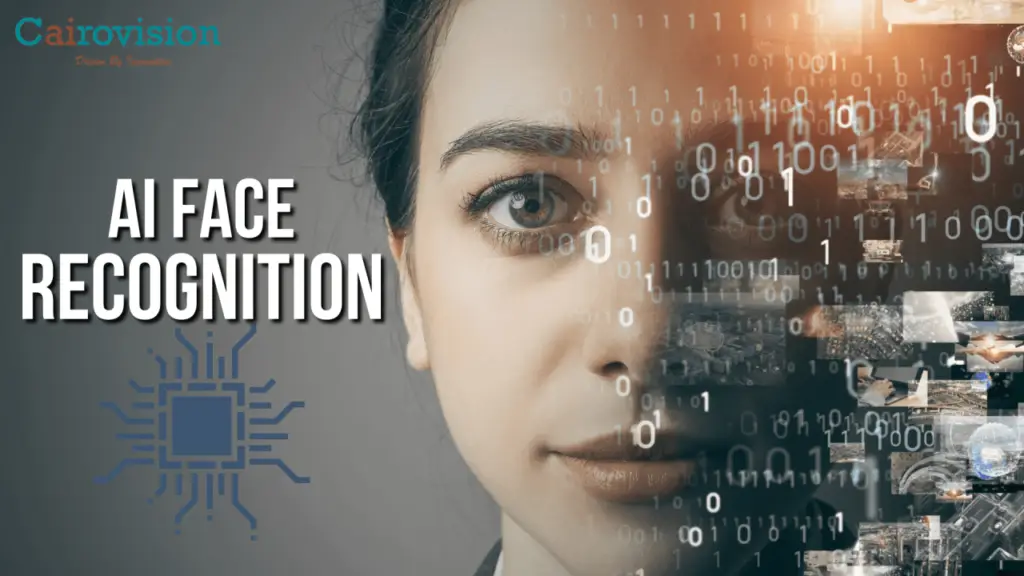“Imagine a world where computers can recognize you just like an old friend does. Welcome to the fascinating realm of face recognition technology! This revolutionary innovation has transformed how we live, work, and interact. From unlocking your phone with a glance to enhancing national security, face recognition technology has numerous applications that are both impressive and thought-provoking. Let’s dive in and explore the intricacies of this groundbreaking technology and uncover its potential to shape our future.”FACE RECOGNITION CAMERA
A Brief Overview of the Development of Face Recognition Technology

Face recognition technology has come a long way since its humble beginnings in the 1960s. What started as a research project to help machines understand human faces has evolved into a powerful tool that’s changing the way we live and work.FACE RECOGNITION CAMERA
In the early days, face recognition was manual and cumbersome. Researchers would measure facial features by hand, using calipers to calculate the distance between the eyes, nose, and mouth. It was a tedious process that yielded limited results. FACE RECOGNITION CAMERA
Fast forward to the 1980s, when the first face recognition software was developed. This pioneering technology used basic algorithms to match faces, but it was still prone to errors.FACE RECOGNITION CAMERA
One of the earliest real-life applications of face recognition was in the 1990s when the US military used it to identify enemies in the Gulf War. This technology was also used in the aftermath of 9/11 to identify suspects. FACE RECOGNITION CAMERA
In the 2000s, face recognition started to become more mainstream, with law enforcement agencies using it to solve crimes. For example, in 2006, a suspect was caught in Virginia after his face was recognized by a surveillance camera. FACE RECOGNITION CAMERA
Today, face recognition technology is more advanced and ubiquitous than ever. We use it to unlock our phones, tag friends on social media, and even pay for purchases in some stores. But with great power comes great responsibility, and concerns about privacy and bias have sparked heated debates. FACE RECOGNITION CAMERA
The Brain Behind Face Recognition: Algorithms and Processes

Ever wondered how face recognition systems manage to identify you in a crowd? It’s not magic, but rather the result of complex algorithms and processes working together like a well-oiled machine. FACE RECOGNITION CAMERA
Step 1: Face Detection
The first step is to detect a face in an image or video stream. This is done using techniques like edge detection, which identifies the outlines of a face, and skin tone detection, which distinguishes faces from the rest of the image. FACE RECOGNITION CAMERA
Step 2: Face Alignment
Once a face is detected, the system rotates and scales it to a standard position, ensuring that the eyes, nose, and mouth are aligned. This step is crucial for accurate recognition. FACE RECOGNITION CAMERA
Step 3: Feature Extraction
The system then extracts unique features from the face, such as the distance between the eyes, nose shape, and jawline. These features are converted into a mathematical representation called a faceprint. FACE RECOGNITION CAMERA
Step 4: Comparison and Matching
The faceprint is then compared to those in a database to find a match. This is done using algorithms like Eigenfaces, Fisherfaces, or DeepFace, which calculate the similarity between faces. FACE RECOGNITION CAMERA
Real-Life Example:
In 2019, a suspect was caught in New York City after a face recognition system matched his face to a surveillance image. The system, developed by Clearview AI, uses a massive database of faces scraped from social media and the internet to identify individuals. FACE RECOGNITION CAMERA
The Science Behind the Magic
While face recognition systems are impressive, it’s important to understand the science behind them. By grasping how these algorithms and processes work, we can appreciate the technology’s potential and limitations. In the next section, we’ll explore the various types of face recognition systems and their applications.
The Many Faces of Face Recognition: 2D, 3D, and Beyond

Face recognition technology comes in different flavors, each with its unique strengths and weaknesses. Let’s explore the various types of face recognition systems and how they are used in real-life scenarios. FACE RECOGNITION CAMERA
2D Face Recognition
This type of face recognition uses two-dimensional images to identify faces. It’s the most common type used in security systems, law enforcement, and social media platforms. 2D face recognition is fast and efficient but can be fooled by changes in lighting, facial expressions, or angles. FACE RECOGNITION CAMERA
Real-Life Example:
In 2019, a Chinese school used 2D face recognition to monitor students’ attention in class. The system detected distracted students and alerted teachers to improve engagement.FACE RECOGNITION CAMERA
3D Face Recognition
Three-dimensional face recognition uses depth sensors to capture facial features, making it more accurate and resistant to spoofing attempts. 3D face recognition is used in high-security applications, such as border control and financial transactions.
Real-Life Example:
In 2020, the Dubai International Airport introduced 3D face recognition to speed up passenger processing. The system reduced processing time by 80% and increased security. FACE RECOGNITION CAMERA
Other Types of Face Recognition
Other variants include:
Infrared Face Recognition: uses heat signatures to identify faces, even in complete darkness.
Multispectral Face Recognition: uses images from different parts of the electromagnetic spectrum to enhance accuracy.
Hybrid Face Recognition: combines multiple modalities, like 2D and 3D, for robust identification.
The Future of Face Recognition
As technology advances, we can expect even more innovative applications of face recognition. From enhanced security to personalized experiences, the possibilities are endless. In the next section, we’ll delve into the real-world applications of face recognition technology. FACE RECOGNITION CAMERA
Face Recognition in Action: Real-World Applications

Face recognition technology has seamlessly integrated into various industries and aspects of our lives, making it an indispensable tool for efficiency, security, and innovation. Let’s explore some examples of how face recognition is used in different sectors and situations. FACE RECOGNITION CAMERA
Security and Law Enforcement
Face recognition helps law enforcement agencies identify suspects, track criminals, and enhance public safety. For instance, the FBI’s Next Generation Identification (NGI) system uses face recognition to match suspects with criminal records. FACE RECOGNITION CAMERA
Real-Life Example:
In 2019, a suspect was caught in California after a face recognition system matched his face to a surveillance image, solving a 13-year-old murder case. FACE RECOGNITION CAMERA
Finance and Banking
Face recognition is used in financial transactions, such as mobile payments and ATM withdrawals, to prevent fraud and enhance security. FACE RECOGNITION CAMERA
Real-Life Example:
In China, facial recognition payment systems like Alipay and WeChat Pay have become increasingly popular, allowing users to make transactions with just a smile.
Healthcare
Face recognition is used in medical applications, such as diagnosing genetic disorders and tracking patient health. FACE RECOGNITION CAMERA
Real-Life Example:
Researchers at the National Human Genome Research Institute use face recognition to identify genetic disorders, like DiGeorge syndrome, by analyzing facial features.
Retail and Marketing
Face recognition is used in retail to analyze customer demographics, track shopping behavior, and personalize experiences. FACE RECOGNITION CAMERA
Real-Life Example:
In Japan, the retail giant, Uniqlo, uses face recognition to analyze customer age, gender, and preferences, offering personalized fashion recommendations.
Travel and Immigration
Face recognition is used in airports and border control to enhance security, speed up processing, and improve passenger experience.
Real-Life Example:
In the United States, the Transportation Security Administration (TSA) uses face recognition to verify passenger identities and reduce wait times.
The Watchful Eye: Face Recognition in Security and Surveillance

Face recognition technology has become a powerful tool in the fight against crime and terrorism, enhancing security and surveillance systems worldwide. Let’s delve into the role of face recognition in keeping us safe and explore some real-life examples.
Enhancing Public Safety
Face recognition helps law enforcement agencies identify suspects, track criminals, and prevent crimes. It’s like having a superpower that helps keep our communities safe.
Real-Life Example:
In 2019, the New York Police Department (NYPD) used face recognition to identify a suspect who had thrown an explosive device in a crowded subway station. The suspect was apprehended and charged with attempted murder.
Airport Security
Face recognition is used in airports to identify potential security risks, verify passenger identities, and streamline the boarding process. It’s like a digital passport control!
Real-Life Example:
In 2020, the Dubai International Airport introduced face recognition technology to speed up passenger processing. The system reduced processing time by 80% and increased security.
Border Control
Face recognition is used at borders to identify individuals, verify their identity, and prevent illegal crossings. It’s like a digital gatekeeper! FACE RECOGNITION CAMERA
Real-Life Example:
In 2019, the US Customs and Border Protection (CBP) used face recognition to identify a wanted criminal trying to enter the country illegally. The individual was apprehended and deported. FACE RECOGNITION CAMERA
Privacy Concerns
While face recognition enhances security, it also raises concerns about privacy and data protection. It’s essential to strike a balance between safety and individual rights. FACE RECOGNITION CAMERA
Real-Life Example:
In 2020, the city of San Francisco banned the use of face recognition technology by local law enforcement agencies, citing privacy concerns. FACE RECOGNITION CAMERA
The Ethics of Face Recognition: Privacy, Bias, and Transparency
As face recognition technology becomes increasingly pervasive, concerns about privacy, bias, and transparency have come to the forefront. It’s essential to examine the ethical implications of this technology and ensure that it’s used in ways that respect human rights and dignity.
Privacy Concerns
Face recognition technology raises significant privacy concerns, as it can be used to track individuals without their consent or knowledge. This is particularly worrying in situations where surveillance is widespread, such as in public spaces or online platforms.
Real-Life Example:
In 2019, it was revealed that the facial recognition app, FaceApp, had been collecting and storing users’ facial data without their consent. The app had been downloaded over 100 million times, highlighting the vast potential for data misuse.
Bias and Discrimination
Face recognition technology can perpetuate existing biases and discrimination if the algorithms used to develop the technology are biased themselves. This can lead to incorrect identifications, targeting of minority groups, and exacerbation of existing social inequalities.
Real-Life Example:
In 2020, a study by the MIT Media Lab found that face recognition technology was more accurate for white faces than black faces, highlighting the potential for racial bias in the technology.
Transparency and Accountability
It’s essential to ensure that face recognition technology is used transparently and that there are mechanisms in place to hold those using the technology accountable for any misuse or errors. FACE RECOGNITION CAMERA
Real-Life Example:
In 2020, the city of Oakland, California, passed a law requiring law enforcement agencies to obtain community input and approval before using face recognition technology. This move aimed to increase transparency and accountability in the use of the technology.
The Imperfections of Face Recognition: Errors, Biases, and Consequences
Face recognition systems are not infallible. They can make mistakes, perpetuate biases, and have serious consequences on individuals and communities. Let’s explore the potential for errors and biases in face recognition systems and the real-life implications.
False Positives and Negatives
Face recognition systems can incorrectly identify individuals, leading to false positives (misidentification) or false negatives (failure to identify).
Real-Life Example:
In 2018, an African American man in Detroit was wrongfully arrested due to a false positive face recognition match. The system had misidentified him as a suspect, highlighting the potential for racial bias in the technology.
Bias in Algorithms
Face recognition algorithms can perpetuate existing biases if they’re trained on biased data, leading to inaccurate results for certain groups.
Real-Life Example:
A 2020 study found that face recognition algorithms were more accurate for male faces than female faces, highlighting gender bias in the technology.
Data Quality Issues
Poor-quality images, varying lighting conditions, and facial expressions can affect the accuracy of face recognition systems.
Real-Life Example:
In 2019, a facial recognition system used by the UK police mistakenly identified a protester as a wanted criminal due to a poor-quality image.
Human Oversight
The lack of human oversight and review processes can exacerbate errors and biases in face recognition systems.
Real-Life Example:
In 2020, the FBI faced criticism for relying solely on face recognition technology to identify suspects, without human oversight or review.
Face Recognition in Action: Real-Life Case Studies
Face recognition technology is no longer just a concept, it’s a reality that’s being used in various industries and applications. Let’s explore some real-life case studies that demonstrate the power and potential of face recognition technology.
Law Enforcement: Catching Criminals
In 2019, the New York Police Department (NYPD) used face recognition technology to catch a suspect who had evaded them for 15 years. The technology matched the suspect’s face to a decades-old mugshot, leading to his arrest.
Security: Enhancing Public Safety
In 2020, the city of Atlanta installed face recognition technology in public spaces to enhance public safety. The system detected and alerted authorities to potential threats, preventing several criminal incidents.
Healthcare: Diagnosing Genetic Disorders
Researchers at the National Human Genome Research Institute used face recognition technology to diagnose genetic disorders, such as DiGeorge syndrome, by analyzing facial features.
Retail: Personalized Shopping Experience
In 2019, a luxury fashion brand used face recognition technology to offer personalized recommendations to customers. The technology analyzed customers’ facial features and preferences to suggest tailored fashion choices.
Travel: Streamlining Airport Security
In 2020, the Dubai International Airport introduced face recognition technology to streamline security checks. The system reduced processing time by 80% and improved passenger experience.
The Future of Face Recognition: Advancements and Possibilities
As face recognition technology continues to evolve, it’s exciting to speculate on its future developments and potential applications. Let’s explore some possibilities and real-life examples that hint at what’s to come.
Increased Accuracy and Speed
Future face recognition systems may achieve near-perfect accuracy and speed, enabling seamless identification in various settings.
Example: A future airport security system quickly and accurately identifies travelers, streamlining the boarding process.
Emotion and Health Detection
Advancements may enable face recognition to detect emotions, health conditions, and even mental health states.
Example: A future mental health app uses face recognition to detect early signs of depression, providing resources and support.
Augmented Reality and Gaming
Face recognition may integrate with augmented reality (AR) and gaming, revolutionizing interactive experiences.
Example: A future AR game uses face recognition to create personalized avatars, enhancing gameplay and engagement.
Privacy and Security Enhancements
Future face recognition systems may prioritize privacy and security, addressing concerns and ensuring ethical use.
Example: A future smart home system uses face recognition to securely authenticate residents, protecting privacy and property.
Healthcare and Medicine
Face recognition may aid in medical diagnoses, drug development, and personalized treatment plans.
Example: A future medical platform uses face recognition to identify genetic disorders, enabling targeted treatments.
The Face of the Future: Summary and Final Thoughts
As we conclude our exploration of face recognition technology, let’s summarize the main points and reflect on its impact.
Main Points:
Face recognition technology has advanced significantly, with applications in security, healthcare, retail, and more.
The technology has the potential to enhance public safety, improve efficiency, and personalize experiences.
However, concerns around privacy, bias, and ethics must be addressed.
Final Thoughts:
Face recognition technology is a powerful tool that must be wielded responsibly.
As we continue to develop and deploy this technology, we must prioritize transparency, accountability, and human oversight.
The future of face recognition holds much promise, but we must address the challenges and ensure that this technology benefits humanity as a whole.
Real-Life Example:
The city of San Francisco banned the use of face recognition technology by local law enforcement agencies, citing privacy and bias concerns. This move highlights the need for responsible development and deployment of this technology.
Human Touch:
As we embrace face recognition technology, let’s remember that behind each face is a person, with emotions, hopes, and fears. Let’s harness this technology to build a better future for all.


Nice